Energy bills: Straw houses and other saving secrets
- Published
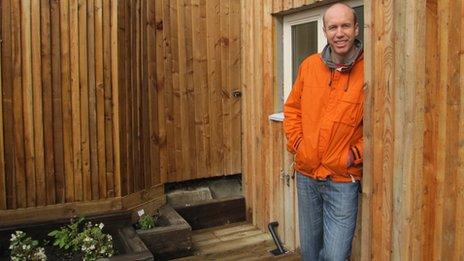
Peter Urquhart's timber-framed house has a number of energy saving features
What do an Australian accountant living in south-west London, a 65-year-old sheep farmer in Wales, and council tenants in a rural Lincolnshire district have in common?
The answer is a passion for energy efficiency that means that they will not be hit as hard as most by the latest round of gas and electricity price rises.
They have built or live in properties where the insulation drastically reduces the need for heat.
"You have to plug the gaps, otherwise it is like pouring water into a leaky bucket," says Peter Urquhart, the Aussie who has created an eco home in North Cheam.
'Unusual'
His project is no grand design, but a two-bedroom, timber-framed bungalow which his neighbours refer to as "the shed".
Close to completion in a suburban estate opposite a primary school, only the modern chimneys protruding from the slanting low-rise roof give any clue that this property is different.
But inside, skylights mean the rooms are filled with natural light and there is a ventilation system which allows the stale air going out to heat the fresh air coming in.
Solar panels lay flat against the roof, creating energy for the underfloor heating.
"It is unusual, but it is a home at the end of the day," says 36-year-old Mr Urquhart.
Saving tips
The project, he says, took a lot more time, energy and money than he expected. Yet, for him, the reward is displaying an example of what can be done.
It is not, he admits, a template for every home in the UK. After all, not everyone has the opportunity to build from scratch, or has the finance to spend upfront.
Yet, the Energy Saving Trust says there are small changes that people can make to their homes to make them more energy efficient, and cut bills.
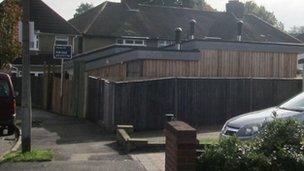
The Eco House is tucked away in a suburban estate
They include the use of energy saving lightbulbs, turning off unnecessary lights, setting the washing machine to 30C, or wrapping hot water tanks in decent insulation.
Mr Urquhart's motivation was his concern for the environment - a view shared by his wife Lucy.
The result is a property which, he estimates, has only a third of the energy needs of an equivalent Victorian home - and 40% of them are provided by the solar panels.
The arrival of three-month-old daughter Molly means they have changed their plans to move in, so now they want to sell before embarking on a similar eco home project elsewhere.
Energy bypass
He is not the only one looking to mirror the design of an energy efficient property.
Sheep farmer Anthony Porter has planning permission to build three cottages on his land in the historic county of Radnorshire in Wales.
He built the first after reading about American settlers who, despite a shortage of timber, built homes that lasted for more than 100 years.
Their, and his, choice of building material was bales of straw.
With the price-lifting, profit-making energy industry being portrayed as the big bad wolf, the house made of straw may have worked after all.

The Straw Cottage is in the grounds of the Porters' farm in Wales
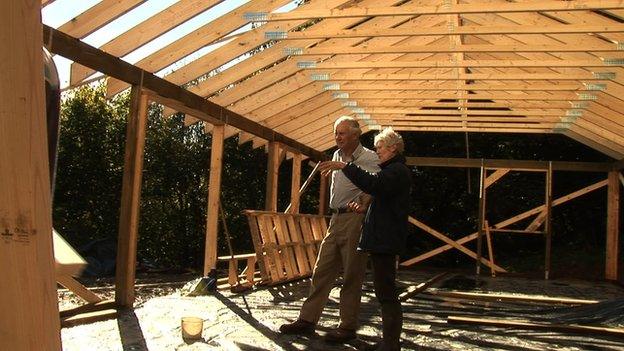
Anthony and Margot Porter designed and built most of the cottage themselves
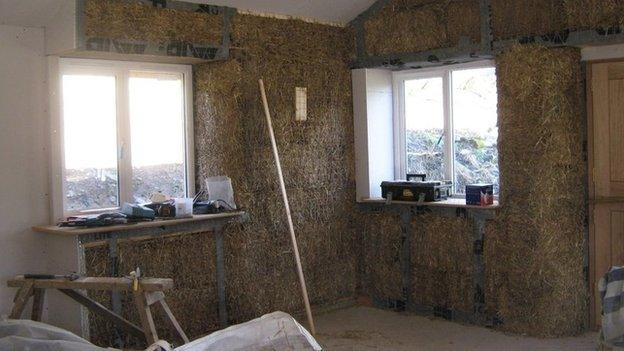
During construction, straw bales were used to insulate the walls before being covered by lime mortar
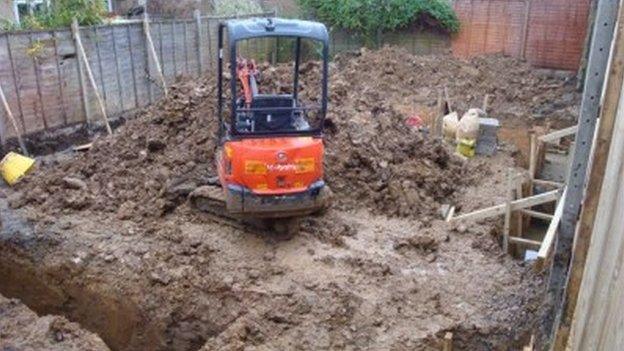
Peter Urquhart built his London Eco House from scratch
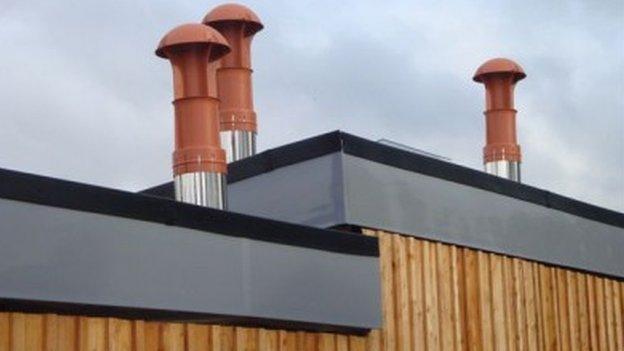
The house features a timber frame and an unusual ventilation system
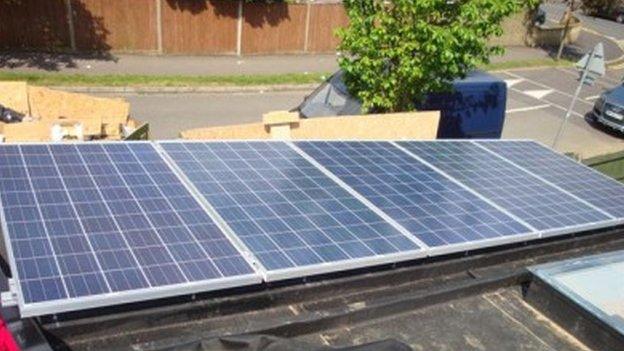
Solar panels are designed to generate about 40% of the home's energy needs
Lanterns, wind-up torches, a shower warmed by propane gas, and a wood-burning stove nullify the need for mains gas or electricity.
The two-bedroom holiday cottage, nestled in idyllic countryside, was built during eight months of huff and puff by Mr Porter and a builder through the winter of 2012.
Now it is hired by holiday-makers looking for a break from the gadgets and gizmos of modern life.
Mr Porter says it is more fire resistant than a timber-framed house, and carries no greater insurance premium than a standard cottage.
The walls are plastered with lime mortar and the roof space is insulated with sheep's wool, meaning the whole building, excluding the land and his own labour, cost Mr Porter £31,700.
"It was quite a leap of faith," he admits.
Social housing
It was even more of a gamble for the councillors of North Kesteven in Lincolnshire to spend taxpayers' money on building the first straw bale social housing in the country in 2010.
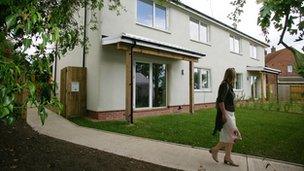
North Kesteven District Council built straw homes in 2010
But, after looking at the figures, they were convinced it would pay off.
The three-bedroom family homes each had a building budget of £110,000, which the council says is £20,000 less than a brick-built home of the same size.
They also feature sheep's wool insulation, solar panels and triple glazing, resulting in an average saving of 44% in running costs, the council estimates.
Critics of straw bale homes say that the thickness of the walls means there is less space in the house than with more standard walls. The need to keep them free of leaks and moisture is also vital.
More significantly, most homeowners and tenants do not have the opportunity to bypass big energy bills in the same way, especially if they are living in draughty, Victorian homes.
While these projects provide an advert for insulation, very few people have signed up to the Green Deal - a scheme in England, Wales and Scotland through which householders can borrow money to install double-glazing, loft insulation, and more efficient boilers.
Enthusiasts of self-built homes argue that building a home from scratch means a range of energy efficient installations would be easier to include than in older homes.
Self-build is a sector being encouraged by the government with tax breaks, despite the fact that those who want to build their own homes often complain of a shortage of land, planning difficulties, and a lack of mortgage products to finance the project.
"With the lack of new homes being built at the moment, you would have thought more lenders would be offering self-build mortgages. Many of the banks and building societies quietly pulled out of the market citing a lack of demand for their mortgages," says Aaron Strutt, of mortgage brokers Trinity Financial.
And there is an added irony. The energy companies are suggesting that government-imposed "green" levies are getting more expensive and are pushing up bills for consumers.
There is little doubt that before a solution is reached, and before eco homes become less of a novelty, household energy costs will keep on rising.